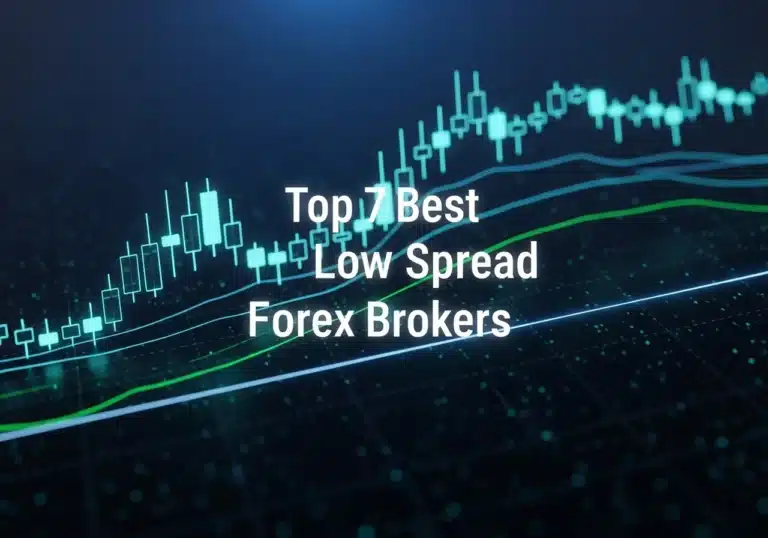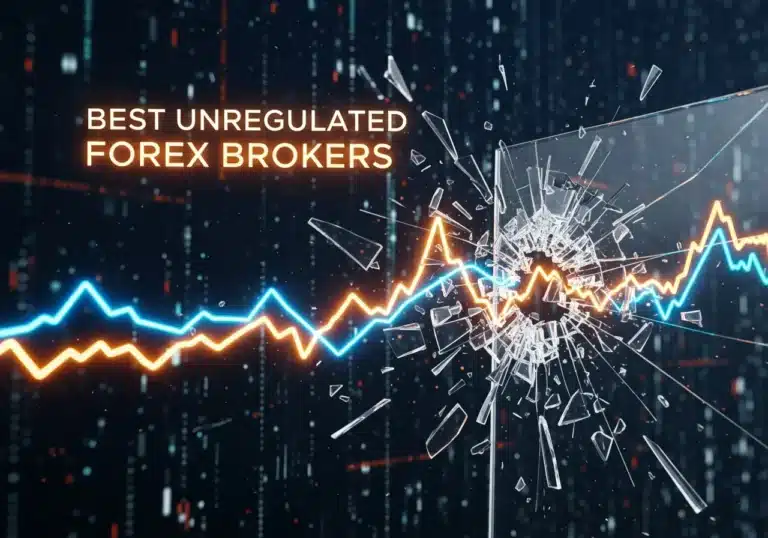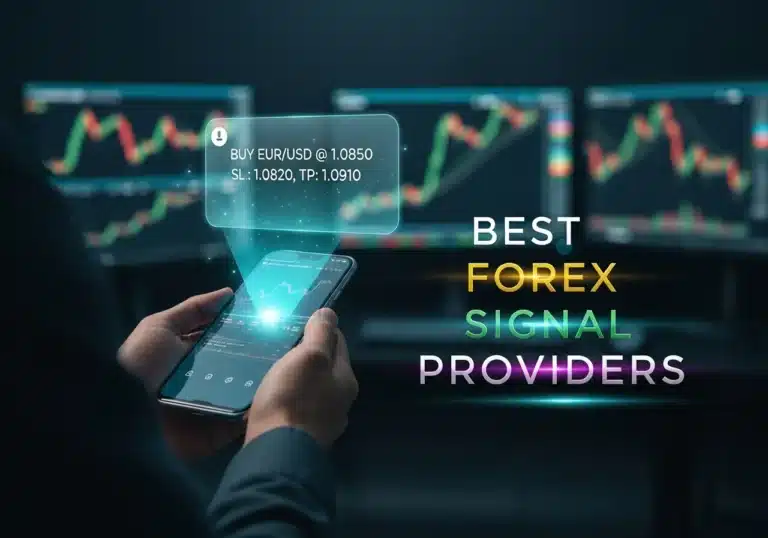The best AI tools for technical analysis right now are TrendSpider, for its automated chart analysis, Trade Ideas, for its AI-driven trading signals, and TradingView, for its AI-enhanced charting capabilities. These tools leverage artificial intelligence to automate complex analysis, identify patterns humans might miss, and provide data-driven insights to traders. Whether you are a retail investor or trading with a regulated forex broker, these platforms can significantly enhance your strategy. In this article, we will dive deep into these tools and four others, providing hands-on reviews to help you find the perfect fit for your trading style in 2025.
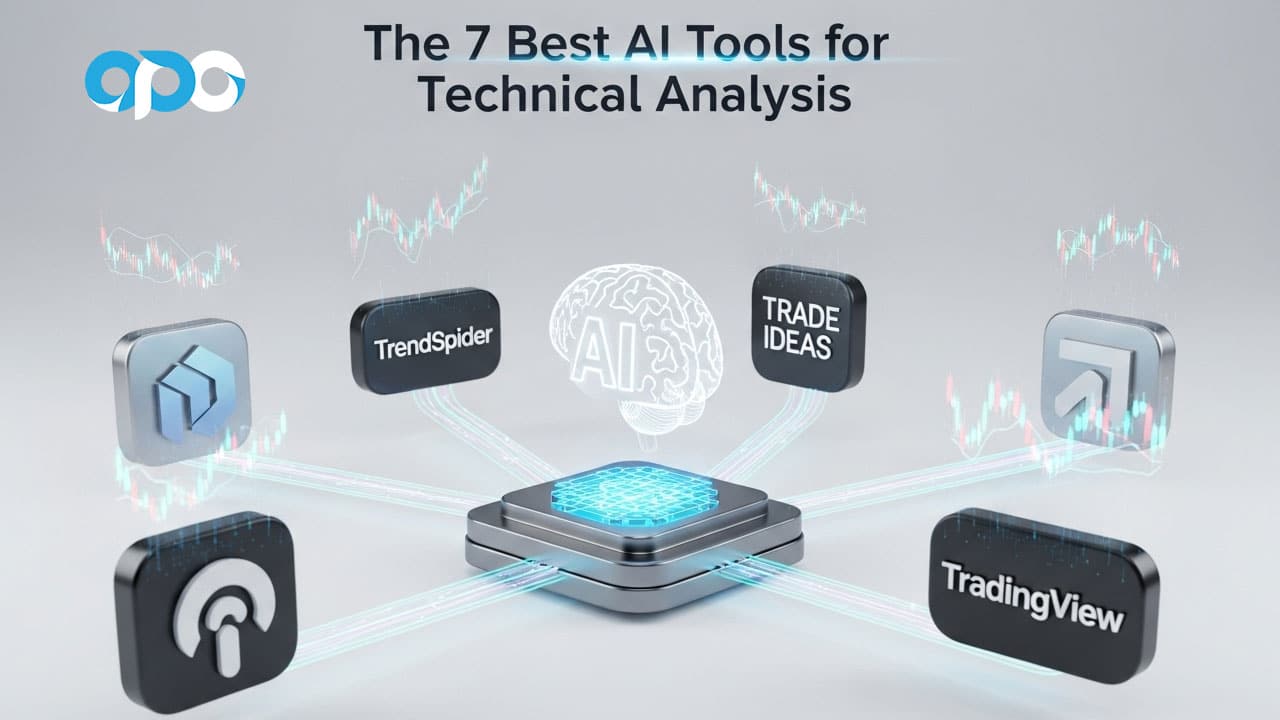
Key Takeaways
- Automation is Key: AI tools excel at automating repetitive tasks like drawing trendlines and spotting chart patterns, saving you hours of manual work.
- Different Tools for Different Traders: The best tool for a day trader (like Trade Ideas) is different from the best tool for a long-term investor (like WallStreetZen) or a quant developer (like QuantConnect).
- AI is an Assistant, Not a Crystal Ball: These tools provide powerful analytical assistance but do not guarantee profits. They are best used to augment, not replace, a solid trading strategy and risk management.
- Backtesting is Crucial: The ability to test strategies against historical data with AI optimization is one of the most powerful features offered by platforms like TrendSpider and Tickeron.
- Cost vs. Value: Free tools offer a great starting point, but serious traders will likely find the investment in premium AI features provides a significant edge and better value over time.
Our Top AI Analysis Tools: A Quick Look
To give you a quick overview, we’ve summarized our top picks in a simple table. This should help you get a feel for which platform might align with your needs before we jump into the detailed reviews. Each of these represents some of the best AI tools for technical analysis available today.
| Tool Name | Best For | Key AI Feature | Pricing (Approx. Monthly) |
| TrendSpider | Automated Chart Analysis | Automated Trendlines & Pattern Recognition | Starts at $33/mo (billed annually) |
| Trade Ideas | Day Trading Signals | Holly AI Trade Signals | $127/mo (Standard), $245/mo (Premium) |
| WallStreetZen | Fundamental & AI Analysis | Zen Score (AI-driven stock rating) | Free tier; Premium at ~$19/mo |
| Tickeron | AI-Driven Trading Bots | AI Robots & Pattern Prediction | $60 – $250/mo (Varies by module) |
| TradingView | AI-Enhanced Charting | Pine Script for Custom AI Indicators | Free tier; Paid plans from ~$15/mo |
| Incite AI | Free AI for Market Insights | Predictive Analytics via Q&A | Primarily Free |
| QuantConnect | Building Custom AI Strategies | Algorithmic Trading with ML Integration | Free tier; Paid plans from ~$20/mo |
What Are AI Technical Analysis Tools?
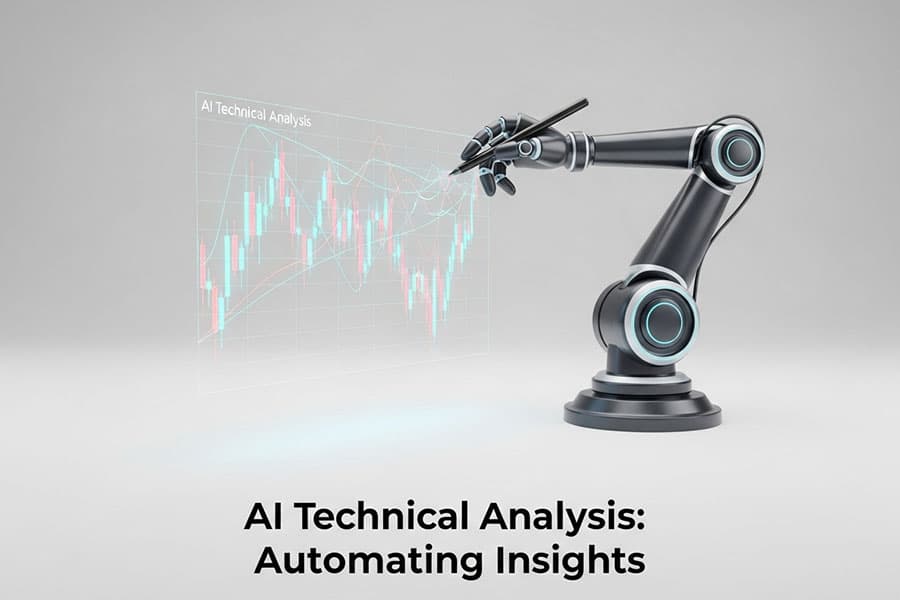
AI technical analysis tools are a new breed of software that uses machine learning, data science, and artificial intelligence to analyze market data. Unlike traditional charting software that requires you to manually draw trendlines, identify patterns, and set up indicators, these tools do much of the heavy lifting for you.
They can scan thousands of assets in real-time, spot complex patterns that are invisible to the human eye, and backtest strategies with a level of speed and accuracy that was once only available to institutional hedge funds. For traders, this means less time staring at charts, fewer emotionally-driven mistakes, and more data-backed decisions. These platforms represent a significant evolution from simple screeners to true analytical partners, making them some of the best AI tools for technical analysis for the modern trader.
In-Depth Reviews: The Best AI-Powered Trading Tools
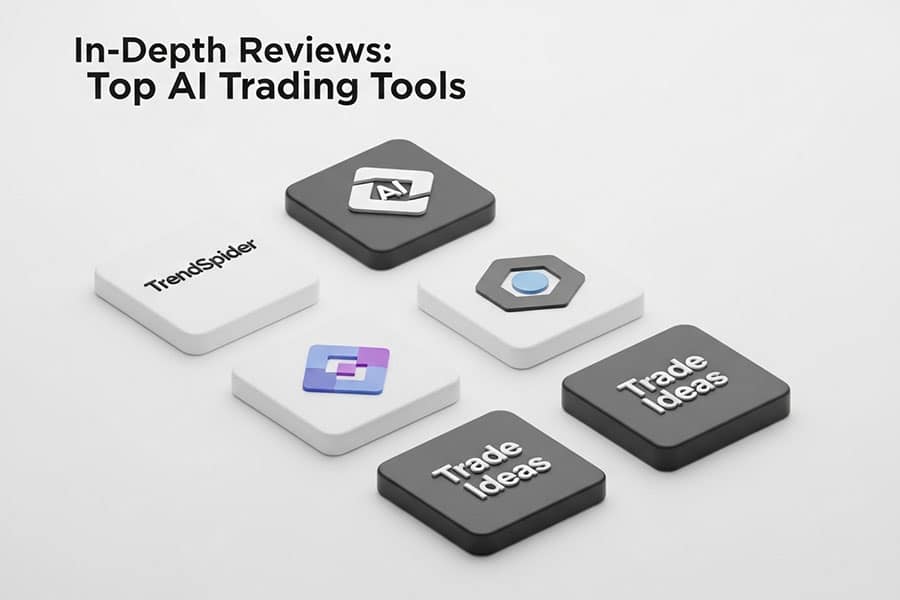
Now, let’s get into the nitty-gritty. I’ve spent considerable time with each of these platforms to understand their strengths, weaknesses, and who they’re truly built for. Here are my hands-on reviews of the best AI tools for technical analysis in 2025.
TrendSpider: Best for Automated Chart Analysis
What it is: TrendSpider is a powerful charting and analysis platform designed to automate the grunt work of technical analysis. It’s built for traders who rely heavily on chart patterns, trendlines, and indicators but want to speed up their workflow dramatically.
Key AI Features: The core of TrendSpider’s AI is its ability to automatically detect trendlines, support/resistance levels, and candlestick patterns across any timeframe. Its multi-timeframe analysis (MTFA) feature is a standout, allowing you to overlay indicators from a higher timeframe (like the 50-day moving average on a daily chart) onto a lower timeframe (like a 15-minute chart). This provides crucial context that is tedious to track manually. The platform also includes a robust backtesting engine that requires no coding, allowing you to test strategies based on its automated analysis.
Who it’s best for: Swing traders, part-time traders, and technical analysts who want to save time and reduce human error in their charting will find TrendSpider invaluable. It’s an excellent tool for those who already have a strategy but want to execute it more efficiently and with greater confidence.
Pricing: Plans start around $33/month when billed annually for the Basic plan, with Premium and Elite tiers offering more advanced features like unlimited backtests and alerts.
Real-World Test: During a volatile week in the forex market, I used TrendSpider on the GBP/JPY pair. Instead of spending 20 minutes drawing potential trendlines on the 4-hour chart, the AI did it in seconds, identifying a critical ascending trendline that had held for several days. I set an alert for a price touch on this AI-drawn line, which fired a few hours later, signaling a perfect entry point that I might have otherwise missed while away from my desk. The efficiency gain was immediately obvious, making it a top contender for the best AI tools for technical analysis.
Trade Ideas: Best AI for Day Trading Signals
What it is: Trade Ideas is less of a charting tool and more of a market intelligence platform specifically designed for active day traders. Its primary function is to scan the entire market and find high-potential trading opportunities in real-time.
Key AI Features: The star of the show is “Holly,” Trade Ideas’ proprietary AI trading assistant. Holly is actually three distinct AIs (Holly Grail, Holly Neo, and Holly 2.0) that run over 70 different strategies against real-time market data every night. Before the market opens, Holly presents a curated list of high-probability trade ideas based on her backtesting results. Throughout the day, she provides specific entry and exit signals for these trades. This is one of the most direct applications of AI for stock market prediction on an intraday basis.
Who it’s best for: This is a tool purpose-built for serious day traders. If you are trading for a living and need a constant stream of high-quality, data-vetted ideas, Trade Ideas is hard to beat. It’s not for the casual investor due to its cost and focus on short-term moves.
Pricing: Trade Ideas is a premium product. The Standard plan is around $127/month, but to get the full power of the Holly AI, you need the Premium plan, which costs about $245/month.
Real-World Test: I followed Holly’s signals for a week, focusing on momentum plays in the first hour of trading. One morning, Holly signaled a long entry on a tech stock that was gapping up on high volume. The AI’s prescribed entry was precise, and it suggested a stop-loss and a profit target. The stock hit the profit target within 45 minutes for a clean, emotion-free trade. While not every signal was a winner, the AI’s discipline and data-driven approach provided a clear edge over chasing random hot stocks.
WallStreetZen: Best for Fundamental & AI Analysis
What it is: WallStreetZen takes a different approach by blending fundamental analysis with an AI-driven scoring system. It’s designed for long-term investors who want to perform deep due diligence on stocks quickly and efficiently, rather than for day trading.
Key AI Features: The core feature is the “Zen Score.” This is a number from 1 to 100 that summarizes a stock’s investment potential based on 38 different checks across five key dimensions: Valuation, Financials, Forecast, Performance, and Dividend. The AI crunches a massive amount of financial data and analyst ratings to generate this score, giving you an instant read on a company’s health. It also features a “Top Analysts” screener that tracks the performance of Wall Street analysts, letting you follow the advice of those with a proven track record.
Who it’s best for: It’s perfect for fundamental investors, long-term holders, and anyone who wants to build a portfolio of solid companies without spending weeks reading financial reports. It democratizes the kind of deep analysis that was once reserved for pros.
Pricing: WallStreetZen offers a generous free tier that provides access to the Zen Score for many stocks. The Premium plan, which unlocks unlimited access and advanced features, is very affordable at around $19/month.
Real-World Test: I was researching a mid-cap retail stock that looked promising on the surface. When I plugged it into WallStreetZen, its Zen Score was a mediocre 45. The AI breakdown immediately flagged a major concern: while its performance was strong, its valuation score was extremely low, indicating the stock was significantly overpriced compared to its fundamentals. This instant, data-driven insight prevented me from making a potentially poor investment based on hype alone.
Tickeron: Best for AI-Driven Trading Bots
What it is: Tickeron is an expansive platform that offers a wide array of AI-powered tools, but its main draw is the “AI Robots.” These are essentially pre-built trading bots designed to execute specific strategies for you.
Key AI Features: Tickeron’s AI focuses heavily on pattern recognition and predictive analytics. You can use their Pattern Search Engine to find stocks exhibiting specific technical patterns (like Head and Shoulders or Bullish Pennants) in real-time. The AI Robots take this a step further by actively trading based on these patterns, with their past performance fully audited and displayed. The platform also offers an AI Trend Prediction Engine and AI-powered portfolios, making it a comprehensive suite of automated technical analysis software.
Who it’s best for: Tickeron is for traders who are comfortable with the idea of algorithmic trading but don’t have the coding skills to build their own bots from scratch. It’s also great for those who want to leverage sophisticated pattern recognition technology.
Pricing: Tickeron’s pricing is modular and can be complex. Access to different AI tools and robots is sold in packages, with prices generally ranging from $60 to $250 per month, depending on the features you need.
Real-World Test: I decided to test one of Tickeron’s AI Robots focused on swing trading large-cap tech stocks. The robot identified a bullish divergence pattern on a popular semiconductor stock and initiated a long position. The platform showed me the exact rationale for the trade, the confidence level, and the projected profit/loss targets. The trade played out over three days and closed for a profit, all without any manual intervention from me. It was a compelling demonstration of hands-off, AI-driven trading.
Read More: Create forex trading robot
TradingView: Best for AI-Enhanced Charting
What it is: TradingView is arguably the most popular charting platform in the world, known for its beautiful charts, massive community, and extensive toolset. While not an “AI tool” out of the box, it’s a powerful platform for implementing AI strategies.
Key AI Features: The AI power of TradingView lies in its proprietary scripting language, Pine Script. This language allows developers and traders to create their own custom indicators and strategies. The platform’s massive community library contains thousands of scripts, including many that use machine learning concepts like regression channels and predictive moving averages. For those who can code, you can build your own AI-powered tools from scratch, making it one of the most flexible AI stock trading platforms.
Who it’s best for: TradingView is for every type of trader, from beginner to pro. However, its specific AI capabilities are best suited for traders who have some coding knowledge (or are willing to learn Pine Script) and for those who want to tap into the creativity of a huge trading community.
Pricing: TradingView has an excellent free, ad-supported plan. Paid plans, which offer more indicators per chart, more alerts, and ad-free viewing, start at around $15/month and go up from there.
Real-World Test: I browsed the community scripts and found a popular “Machine Learning Log-Regression” indicator. I applied it to the Bitcoin/USD chart. The indicator projected a potential price channel based on historical volatility and price action. This AI-generated channel acted as a dynamic guide for support and resistance, providing much clearer potential entry and exit zones than standard Bollinger Bands. It showed me how AI can enhance, rather than just automate, traditional analysis.
Incite AI: Best Free AI for Market Insights
What it is: Incite AI is a newer, more streamlined tool that aims to simplify market analysis by allowing you to ask direct questions. It leverages predictive analytics to provide straightforward answers about stocks and market trends.
Key AI Features: The platform’s core is a natural language processing model. You can ask questions like, “What is the price forecast for Apple next month?” or “Show me undervalued tech stocks with high growth potential.” The AI scans historical data and market variables to generate a predictive response. It’s designed to be intuitive, removing the need to interpret complex charts or data tables.
Who it’s best for: Incite AI is perfect for beginners and investors who are overwhelmed by traditional analysis platforms. It’s a great starting point for those who want quick, AI-driven insights without a steep learning curve or financial commitment.
Pricing: Incite AI is primarily offered as a free tool, making it highly accessible.
Real-World Test: Curious about its predictive power, I asked Incite AI, “Is the energy sector likely to outperform the tech sector in the next quarter?” The AI provided a summary based on recent momentum, analyst ratings, and macroeconomic factors, concluding that the energy sector showed stronger short-term tailwinds. While not investment advice, it provided a well-reasoned, high-level overview in seconds that would have taken me an hour to research manually.
QuantConnect: For Building Custom AI Strategies
What it is: QuantConnect is not for the faint of heart. It is a full-fledged, institutional-grade algorithmic trading platform that allows you to design, backtest, and deploy high-frequency trading strategies in Python and C#.
Key AI Features: This is where AI gets serious. QuantConnect allows you to integrate powerful machine learning libraries like TensorFlow, Scikit-learn, and PyTorch directly into your trading algorithms. You can build strategies based on sentiment analysis from news data, use neural networks to forecast market direction, or create complex risk management models. It provides the raw data and computing power; you provide the AI logic. This is the ultimate tool for creating your own AI for stock market prediction models.
Who it’s best for: QuantConnect is for quantitative developers, data scientists, computer science students, and professional traders who want to build their own proprietary trading algorithms from the ground up.
Pricing: It has a free tier for research and backtesting. Paid plans, which provide more computing power and are required for live trading, start at around $20/month for individuals.
Real-World Test: As an experiment, I used their framework to build a simple algorithm that bought a stock when the sentiment score from a news data feed turned highly positive and sold when it turned negative. I backtested this over a year of historical data. The process was complex and required coding, but the platform’s detailed performance reports showed that the strategy had a slight edge. It was a fascinating look into how institutional-level AI trading is constructed.
Read More:Trading strategy with chatgpt
How We Tested the Top AI Trading Tools
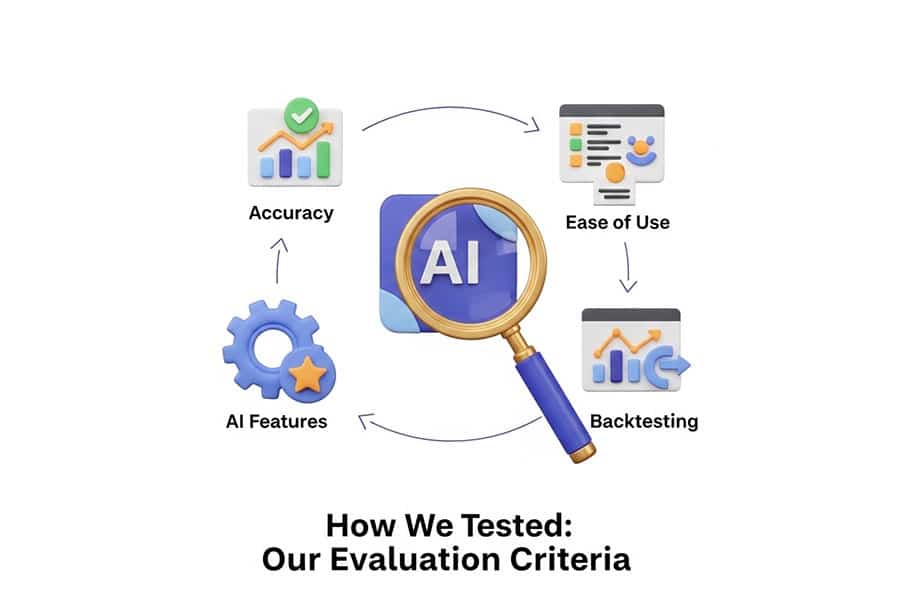
Our goal was to identify the truly best AI tools for technical analysis, not just the most popular. We approached this with a trader-first methodology, focusing on real-world applicability. Our evaluation criteria were strict and based on a combination of hands-on testing and feature analysis.
- Accuracy & Reliability: We scrutinized the AI’s output. Did the automated trendlines make sense? Were the AI signals consistent? We looked for tools that provided reliable, data-backed insights rather than random noise.
- Ease of Use: A powerful tool is useless if you can’t figure out how to use it. We evaluated the user interface, the learning curve, and the quality of customer support and educational resources.
- AI Feature Set: We looked beyond the marketing buzzwords to assess the depth and utility of the AI features. We prioritized tools that offered unique, game-changing capabilities, such as real-time signal generation, no-code backtesting, and predictive modeling.
- Backtesting Capabilities: The ability to test a strategy is paramount. We favored platforms that offered robust, easy-to-use backtesting engines, especially those that could incorporate AI-driven optimizations.
- Value for Money: We weighed the cost of each tool against the features and potential edge it provides. We considered free tiers, trial periods, and whether the premium features justified the price tag for different types of traders.
Key AI Features to Look For in Analysis Software
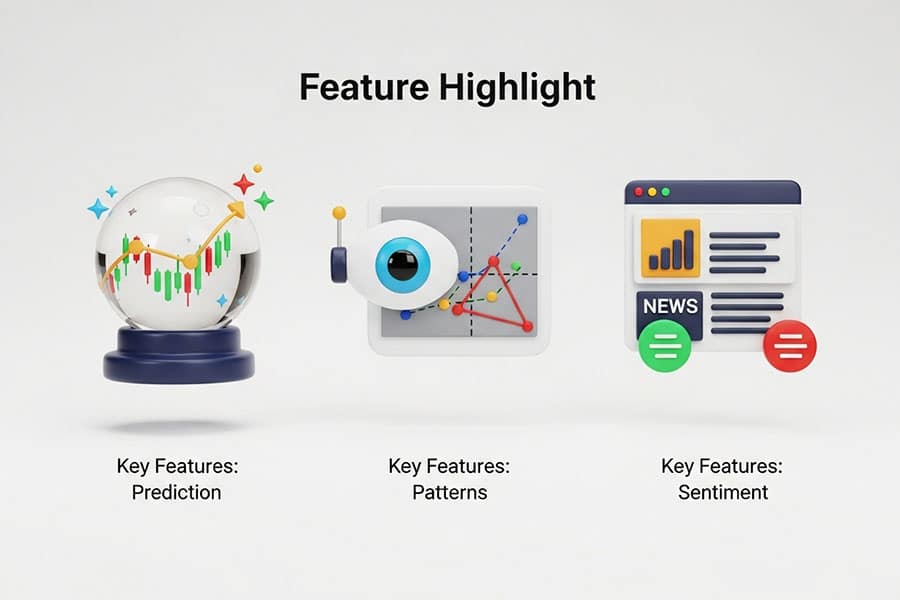
When you’re comparing different AI stock trading platforms, it can be easy to get lost in a sea of features. Here are the core AI functionalities that deliver the most value and should be on your checklist.
Predictive Forecasting & Modeling
This is the ability of the AI to analyze historical and real-time data to project potential future price movements. It’s not about predicting the future with 100% certainty, but rather about identifying statistically probable outcomes. This feature can help you set more intelligent price targets and stop-losses.
Automated Pattern Recognition
This is one of the most significant time-savers. The AI is trained to instantly identify classic technical patterns—like triangles, flags, head and shoulders, and candlestick formations—across thousands of charts simultaneously. This is a core feature of powerful automated technical analysis software and helps you spot opportunities you would have otherwise missed.
AI-Driven Sentiment Analysis
Markets are driven by fear and greed. AI can now scan millions of news articles, social media posts, and financial reports in real-time to gauge the overall sentiment surrounding a stock, currency, or market. A sudden shift from negative to positive sentiment can be a powerful leading indicator.
Backtesting with AI Optimization
Traditional backtesting involves testing a fixed strategy on past data. AI-powered backtesting takes it a step further. It can run thousands of variations of your strategy, automatically tweaking parameters (like moving average lengths or RSI levels) to find the optimal settings for the best historical performance.
Read More: How to trade forex using ai
Are AI Trading Tools Worth It? (Pros vs. Cons)
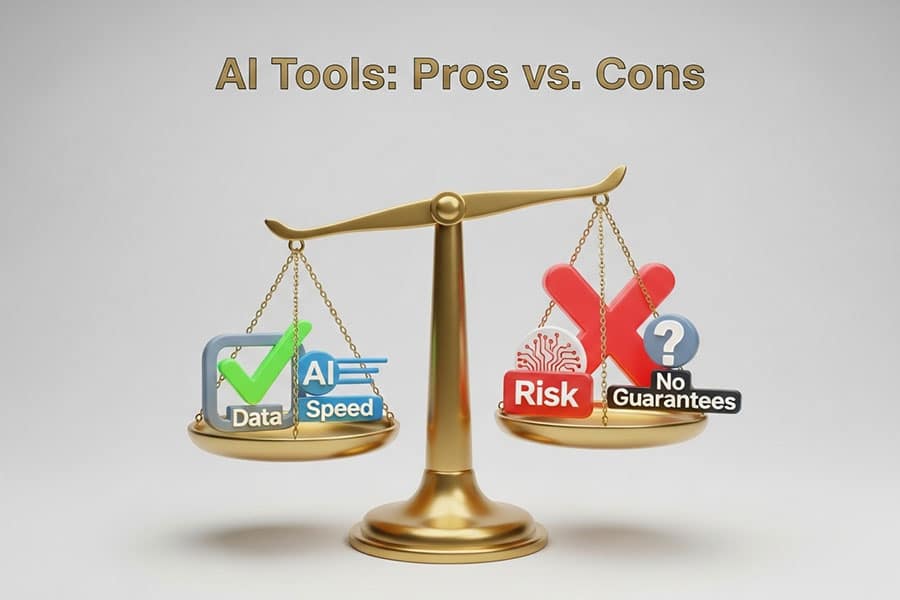
AI tools offer a tantalizing promise of better, faster, smarter trading. But it’s important to have a balanced perspective. Like any tool, they have both significant advantages and potential drawbacks.
Pro: Emotion-Free, Data-Driven Decisions
The biggest enemy of most traders is their own emotion. AI operates purely on data and logic. It doesn’t get greedy, fearful, or impatient. This leads to more disciplined entries and exits based on your predefined strategy, not on a gut feeling.
Pro: 24/7 Market Monitoring & Speed
You can’t watch every market, every stock, all the time—but an AI can. These tools can monitor global markets 24/7 and execute alerts or trades in milliseconds, a speed impossible for a human to match. This capability is a massive advantage in today’s fast-paced markets.
Con: Over-Reliance and Lack of Flexibility
A potential danger is becoming too reliant on the AI and turning off your own critical thinking. Markets can change, and an AI model trained on past data may not adapt well to a new, unprecedented market environment (a “black swan” event). Human oversight and intuition are still crucial.
Con: No Guarantee of Profits
This is the most important point. No AI tool, no matter how sophisticated, can guarantee profits. The market is inherently unpredictable. These are tools for analysis and probability, not a magic crystal ball. They provide an edge, but that edge doesn’t eliminate risk.
Opofinance Services: Enhance Your Trading with AI
For traders looking to combine the best AI tools for technical analysis with a reliable trading environment, a broker like Opofinance offers a compelling package. As an ASIC-regulated broker, it provides a secure foundation for your trading activities.
- Advanced Trading Platforms: Choose from a full suite of top-tier platforms, including MT4, MT5, cTrader, and the user-friendly OpoTrade.
- Innovative AI Tools: Gain an edge with proprietary AI-powered features like the AI Market Analyzer for insights, an AI Coach to refine your strategy, and AI Support for instant assistance.
- Social & Prop Trading: Engage with a community of traders through social trading or explore your potential with professional prop trading opportunities.
- Secure & Flexible Transactions: Enjoy peace of mind with safe and convenient deposit and withdrawal methods, including crypto payments, all with zero fees charged by Opofinance.
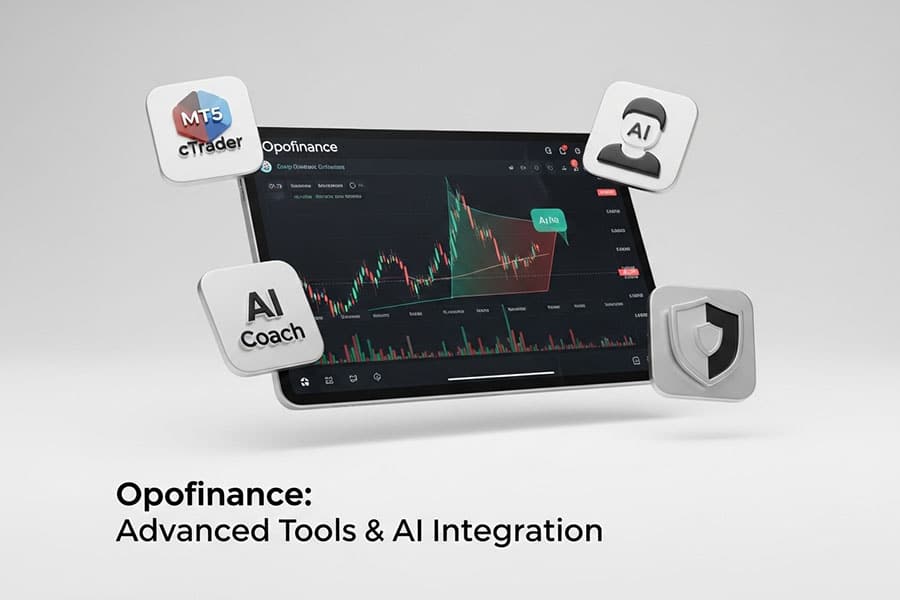
Final Verdict: Which AI Tool is Right For You?
Choosing the right tool depends entirely on your trading identity. For most traders who want to significantly speed up their charting and analysis, TrendSpider offers the best all-around package of automation and usability. Day traders who need real-time, actionable signals will find the AI in Trade Ideas to be unparalleled. For long-term investors, WallStreetZen‘s Zen Score is a brilliant simplification of deep analysis. Ultimately, the best AI tools for technical analysis are the ones that complement and enhance your personal trading strategy.
What is the most accurate AI for stock prediction?
No AI can be 100% accurate in predicting stock prices. However, tools like Trade Ideas’ “Holly” have a strong, publicly-tracked performance for short-term signals, while platforms like Tickeron provide confidence levels for their AI-driven pattern predictions based on historical success rates.
Can AI replace human technical analysis?
Not entirely. AI is incredibly powerful at automating repetitive tasks, identifying patterns, and analyzing vast datasets. However, it often lacks the ability to understand context, nuance, and unforeseen “black swan” market events. The best approach is a hybrid one, where traders use AI as a powerful assistant to enhance their own analysis and decision-making.
Are there any free AI tools for technical analysis?
Yes. Platforms like TradingView offer excellent free tiers with access to community-built AI indicators. Incite AI is also primarily free and provides predictive insights. While premium tools offer more power, these free options are a great way to start exploring the capabilities of AI in trading.
How much capital do I need for AI trading tools?
The capital needed is for trading, not for the tools themselves, although the tools are an added cost. Some tools are free or have affordable plans under $20/month. The capital you need for trading depends on your strategy, risk tolerance, and broker requirements, not the analysis software you use.
What’s the difference between an AI trading bot and an AI analysis tool?
An AI analysis tool (like TrendSpider or WallStreetZen) provides you with data, charts, and insights to help you make a trading decision. An AI trading bot (like those on Tickeron) goes one step further and can automatically execute trades on your behalf based on its programmed strategy. One is for analysis, the other is for execution.


